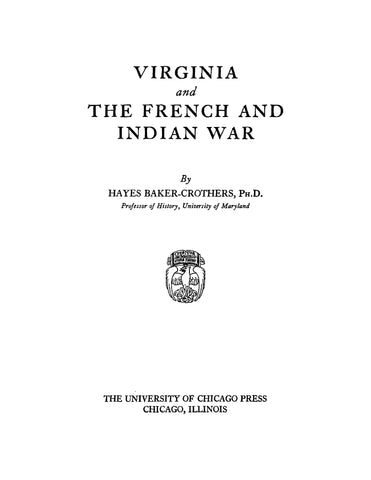
VIRGINIA: Virginia and the French and Indian War (Softcover)
by Hayes Baker-Crothers. 1928. 179p
In the mid-18th century, Dinwiddie sought support from key political figures in Virginia to bolster military efforts against French incursions. The Virginia assembly eventually approved £20,000 for military expenses in 1754, reflecting a growing recognition of the need for defense. However, the militia remained poorly trained and was primarily limited to local defense, which hampered its effectiveness in broader military engagements.
Dinwiddie faced significant challenges in recruiting volunteers for military service, as many frontiersmen were individualistic and reluctant to enlist. The colonial assemblies displayed limited interest in supporting military actions against the French, often prioritizing local concerns over collective defense. This lack of enthusiasm for offensive military strategies further complicated the situation, as Dinwiddie's proposals for a more aggressive approach were largely dismissed.
Financial constraints also played a critical role in undermining military preparations, particularly for Braddock's expedition. The reliance on trade with the French by some colonies created additional complications, as it fostered a sense of complacency and reluctance to engage in conflict. As a result, the Virginia military forces struggled to mount an effective response to the growing threats posed by French and Indian forces in the region.
